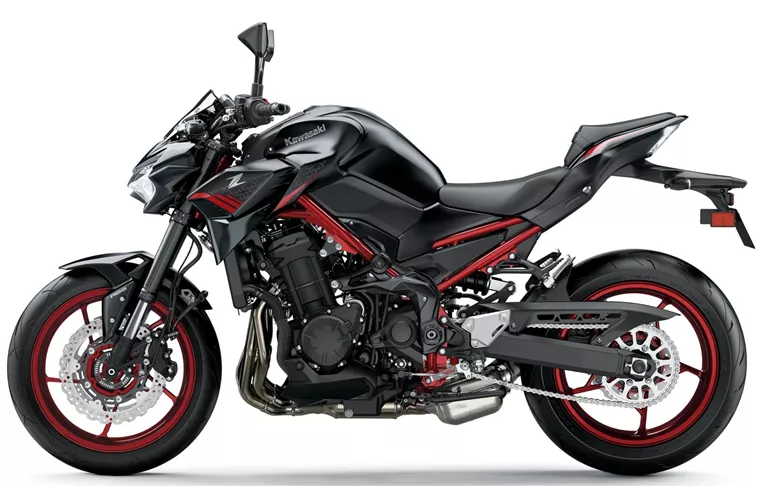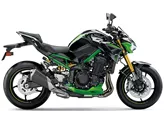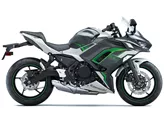Kawasaki Z900 2021 vs. Kawasaki Z1000 2014

Kawasaki Z900 2021

Kawasaki Z1000 2014
Vue d’ensemble - Kawasaki Z900 2021 vs Kawasaki Z1000 2014
The Kawasaki Z900 model year 2021 and the Kawasaki Z1000 model year 2014 are both naked bikes with similar engine types, in-line four-cylinder engines. However, there are several differences between the two models.
In terms of engine power, the Kawasaki Z900 2021 has a slightly lower power output of 125.4 HP compared to the Kawasaki Z1000 2014 with 142 HP. The torque is also lower in the Z900 at 98.6 Nm compared to 111 Nm in the Z1000. Despite these differences, both bikes offer a powerful performance and are capable of delivering exhilarating rides.
Both bikes feature liquid cooling systems to ensure optimal engine temperature regulation. This helps in maintaining the performance and longevity of the engines.
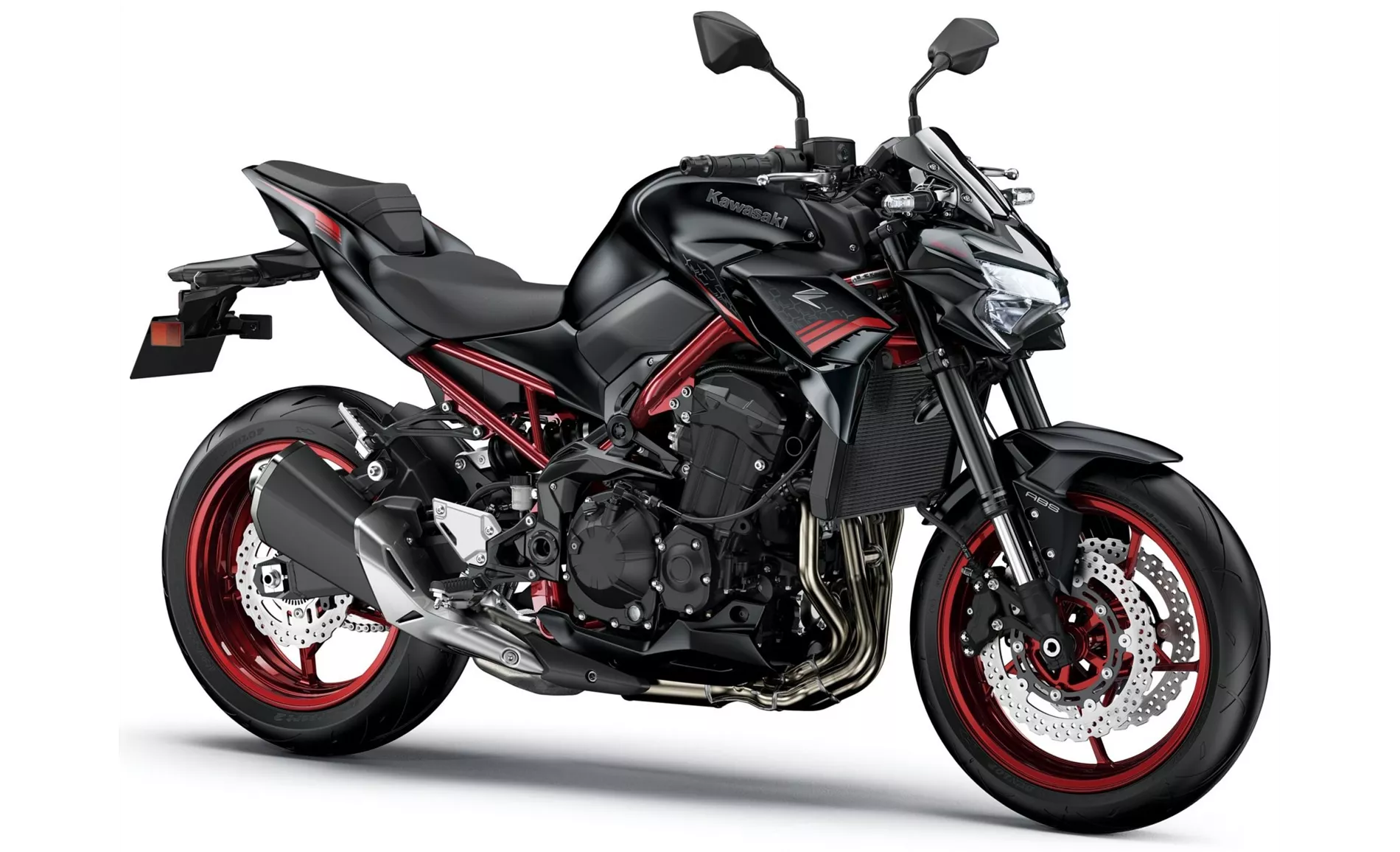
Kawasaki Z900 2021
In terms of suspension, both bikes have upside-down telescopic forks at the front. However, the Z900 2021 offers adjustment options for preload and rebound, while the Z1000 2014 offers additional compression adjustment. This allows riders to fine-tune the suspension to their preferences and riding conditions.
The chassis of the Z900 2021 is made of steel, while the Z1000 2014 features an aluminum frame. The choice of materials affects the overall weight and handling characteristics of the bikes. The steel frame of the Z900 provides stability and durability, while the aluminum frame of the Z1000 offers a balance between rigidity and weight reduction.
Both bikes are equipped with double disc brakes at the front with four-piston calipers. The Z1000 2014 also features radial technology, which enhances braking performance. The braking system on both bikes is reliable and provides excellent stopping power.
In terms of tire dimensions, both bikes have a front tire width of 120 mm and a diameter of 17 inches. However, the Z900 2021 has a slightly narrower rear tire width of 180 mm compared to 190 mm in the Z1000 2014. The wheelbase of the Z900 is slightly longer at 1450 mm compared to 1435 mm in the Z1000. The seat height is also lower in the Z900 at 795 mm compared to 815 mm in the Z1000. These differences may affect the overall handling and maneuverability of the bikes.

Kawasaki Z1000 2014
Moving on to the strengths of each model, the Kawasaki Z900 2021 offers a powerful four-cylinder engine, intuitive handling, good equipment, aggressive looks, and value for money. On the other hand, the Kawasaki Z1000 2014 boasts a sophisticated design, extremely pleasant handling, pleasant sound, and good brakes.
However, there are also weaknesses to consider. The Z900 2021 lacks a quickshifter option and faces competition from other bikes that have a 6-axis IMU for advanced electronic features. The Z1000 2014, on the other hand, has a higher purchase price compared to the S1000R.
In conclusion, both the Kawasaki Z900 2021 and the Kawasaki Z1000 2014 are impressive naked bikes with their own set of strengths and weaknesses. The Z900 offers a more affordable option with good performance and features, while the Z1000 provides a more premium and refined riding experience. Ultimately, the choice between the two models would depend on the rider's preferences, budget, and priorities.
Caractéristiques techniques Kawasaki Z900 2021 par rapport à Kawasaki Z1000 2014
Avantages et inconvénients en comparaison
Avantages et inconvénients en comparaison
Kawasaki Z900 2021
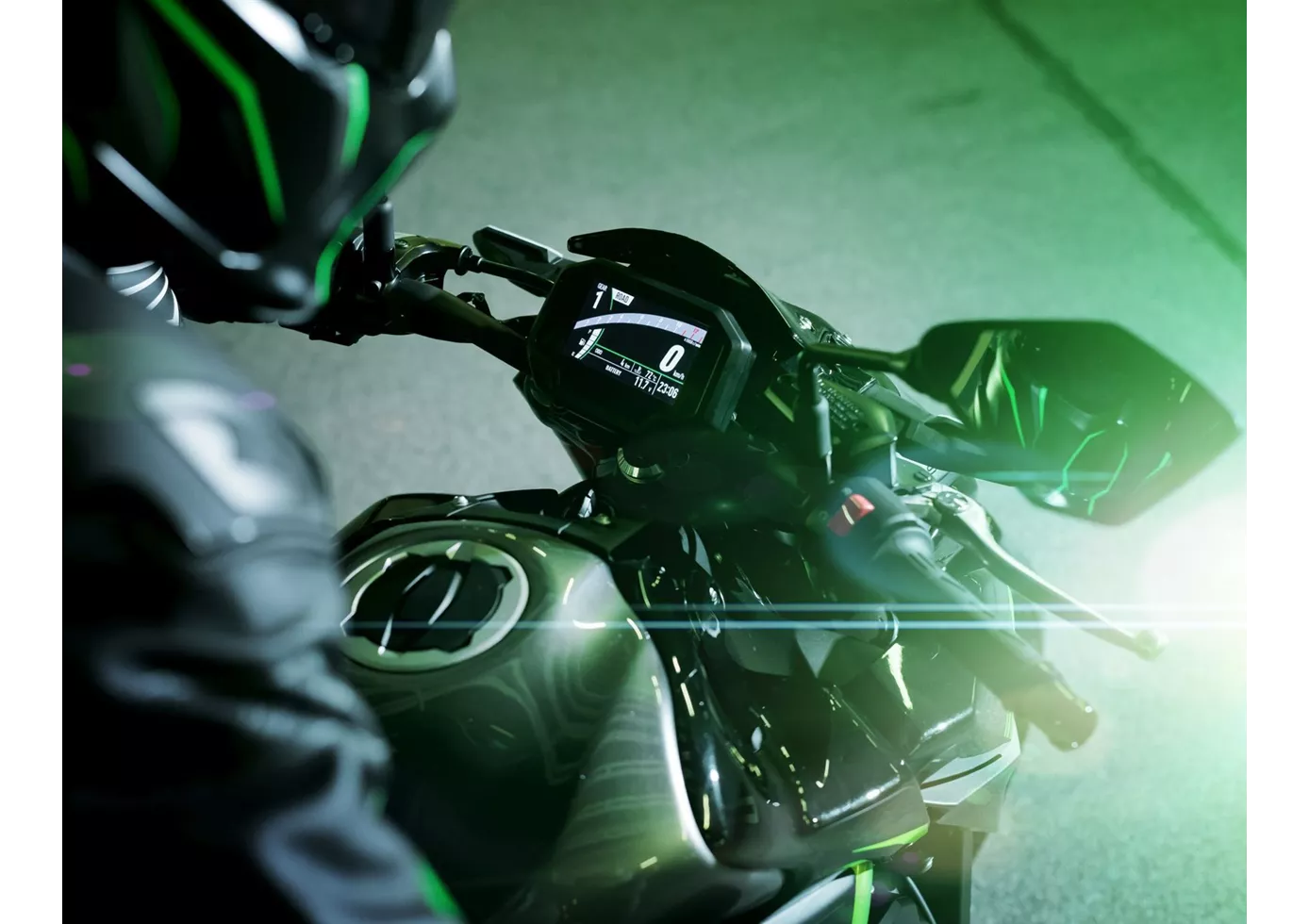
En termes de rapport qualité-prix, la Kawasaki Z900 est actuellement difficile à battre. Avec son moteur parfaitement réglé, ses composants de châssis de haute qualité et l'électronique ajoutée pour 2020, cette moto naked offre tout ce que les conducteurs sportifs recherchent. Il n'y a rien à redire, si ce n'est l'absence d'option Quickshifter.
Kawasaki Z1000 2014

La Kawasaki Z1000 (2014) est une déclaration contre la tendance électronique de son époque - et c'est précisément ce qui la rend particulière aujourd'hui. Son quatre cylindres au caractère bien trempé, sa mécanique directe et sa focalisation sans compromis sur l'essentiel répondent aux attentes d'une époque où de nombreuses motos sont devenues des ordinateurs roulants. Oui, elle renonce aux systèmes avancés d'aide au pilote et à une protection parfaite contre le vent. Mais elle offre en contrepartie une authentique expérience de conduite de nakedbike, associée à la fiabilité japonaise et à des coûts d'entretien raisonnables. La Z1000 n'est pas une machine pour les drogués de la fiche technique ou les fans d'électronique - c'est une moto pour ceux qui veulent encore décider eux-mêmes de leur conduite. Une moto honnête avec du caractère, qui continue à enthousiasmer même après des années et qui fait plus que remplir son rôle d'antithèse émotionnelle de la modernité Digital.
Comparaison des prix Prix moyen du marché Kawasaki Z900 vs Kawasaki Z1000
There are a few key differences between a Kawasaki Z900 2021 and a Kawasaki Z1000 2014. In terms of price, the actual average price of a Kawasaki Z1000 2014 is about 4% higher. Compared to Kawasaki Z1000 2014 there are more Kawasaki Z900 2021 bikes available on the 1000PS.de Marketplace, specifically 33 compared to 12. It takes less time to sell a Kawasaki Z1000 with 75 days compared to 107 days for the Kawasaki Z900. Since model year 2017 1000PS.de editors have written 46 reviews for the Kawasaki Z900 and 41 reviews for the Kawasaki Z1000 since model year 2005. The first review for the Kawasaki Z900 was published on 11/11/2016 and now has more than 93,200 views. This compares to more than 5,800 views for the first review on Kawasaki Z1000 published on 9/2/2002.
